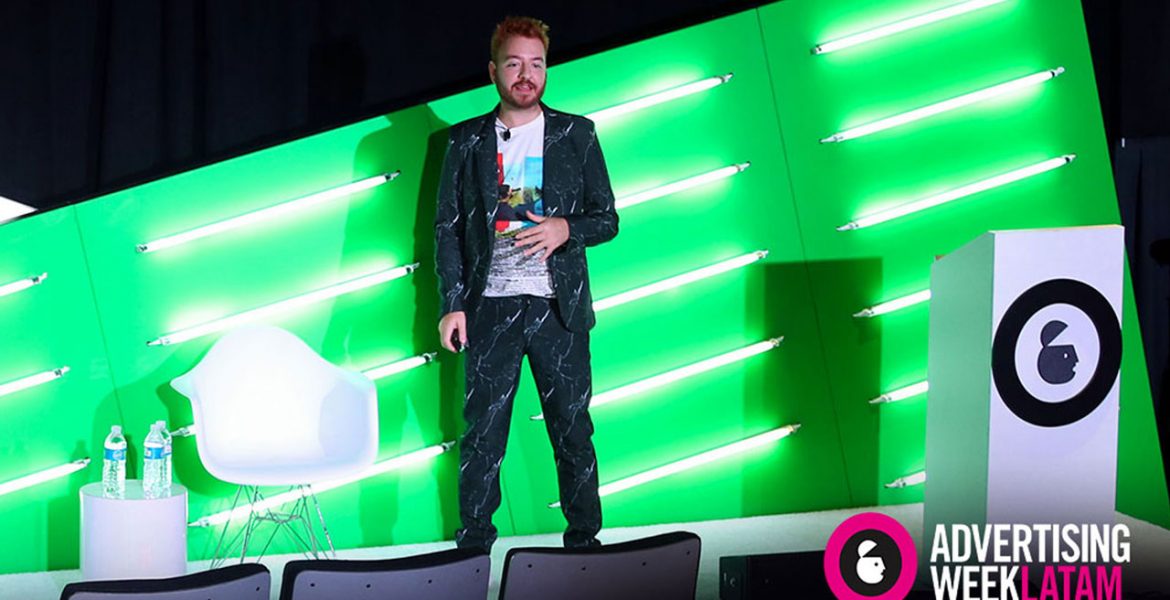Content, influence and the Zeitgeist of our time, could have been another name for the session exposed by Andoni Zarrabe and Luisa Montaño of Discovery Networks during Advertising Week New York, where the role of content in consumers’ purchasing decisions was our main concern.
While advertising has for years considered connecting with its audience through funnel marketing awareness, consideration and purchase, the immediacy of the digital world has led brands to skip consideration by moving from the awareness stage to immediately trying to convert, which has given very low results.
If we want a user to choose our brand, we have to generate differentiation, for this there are 3 levels: practical, the brand helps me like no other, emotional, the brand is close to me, and innovation, the brand is constantly renewed. It is clear that a brand can generate differentiation in the three levels or have greater strength in one of them, but in an environment as competitive as today it is very complex that the strength of the brand is at the practical or innovation level, so if we do not want the user simply to make his decision based on the equation of value for money, we must build on the emotional level, where the role of content is crucial.
Advertising is a determining factor, but it is important to understand which type of content has the greatest impact. This is the content that generates engagement and influence. Involve the audience and then achieve influence, for this Branded Content is the most effective in producing greater involvement.
The first thing for creating Branded Content is to understand the Influencer and this is achieved through a deconstruction of its parts: its audience, platforms, type of content, credibility (voice) and empathy.
Empathy is a key factor, that’s why although we speak as a brand or media, we can never forget that we are addressing people. Being empathetic is what really empowers influencers, because the power of influence goes far beyond likes or comments, it is in transcendence, and transcendence is accomplished through values.
A musician or an actor is not an influencer, is a musician or an actor and they speak to a niche. Today we have a clear example out there of what it’s really like to be an influencer, Greta Thunberg is not talking to niche audiences, she’s talking about something ultra-transcendent.
In order to achieve consideration, we have to consolidate timeless messages, transcendent messages. For this an influencer has the weakness of a human, being human makes them grow old so they lose transcendence. Brands or a medium such as Discovery have that advantage over influencers, they carry a certain heritage and live beyond characters or programs, unlike an influencer they are Timeless.
The Influential, as described by Ed Keller in his book, are the “People with Impact”, this is that they are able to generate a positive impact on their environment. A trendsetter is an early consumer who makes something new transcendent, and again this has to do with empathy.
How can an influencer be charged with this power? It has to generate content and context, be where and when things happen. Present the facts in an impartial way, showing the both sides of a conflict. Participate in the community and be cautious as this affects credibility. Finally, brands also have a lot to tell and we have to lose the fear of our own storytelling.
Our context is the Zeitgeist, the spirit of time, and if we enter any platform today, we find that the spirit of our time is hyperpolarization. Everything is conflict and disagreements, yet it is important to participate in this conversation and through storytelling inspire and propose change.
Macrotrends 2020
The next strategies to generate content have to do with the macrotrends we have at our doorstep:
Joyning: The communities of the digital age, and any brand are somehow generating communities that can be found in digital media. For example, an airline generates a community of travelers and it’s important to understand what kind of community each brand is building.
We-conimics: Crowdfunding and startups, the consumer doesn’t want to be just a consumer, he wants to be a partner. For this you can create loyalty programs, special events, make them part of something.
The Global Brain: Or the so-called internet of things. Today more and more devices are connected to the internet, house lights, intelligent home assistants, etc… There are more and more low-end devices and brands have to think about this to reach everyone, keep in mind having a site that consume less data for example. We are in the middle of a democratization of technology and content.
Mex-identity: Mexico is shining in the world and brands know it. Companies are beginning to focus on highlighting Mexican beauty.
Inspire and empower new generations
All studies show a z generation more apathetic than ever. Young people practice fewer and fewer hobbies and everything points out that stress and depression over grades are to be blamed, both millennials and generation z perceive that if they are not the best at what they do it doesn’t even make sense to try. As brands we have to think that if they have apathy towards everything, much more they are going to have it towards advertising.
Part of understanding the Zeitgeist is to know how to empower the passions of the consumer and the audience through content. By understanding the current context, content is capable of empowering the power of an influencer and transforming it into “People with impact”.
Andoni Zarrabe Almela, Head of Branded Content, Discovery Networks México
Luisa Montaño, Discovery Data & Insights Lab, Discovery Networks México

